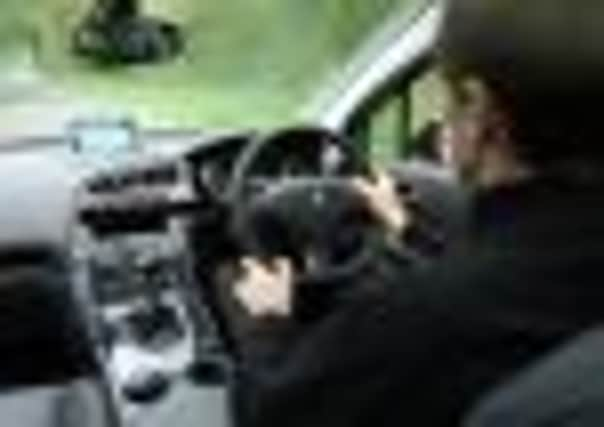Warning as in-car gadgets drive motorists to distraction


Gadgets such as touchscreens, integrated phones and satnavs are too complicated to use in many vehicles, according to a leading consumer organisation.
Its investigation has revealed that 70 per cent of drivers find their in-car technology stops them from paying full attention to driving.
Advertisement
Hide AdAdvertisement
Hide AdWhich? magazine, which wants the motoring industry to get new guidelines on the extent of in-car technology, has also produced its own charter for the government, road safety bodies and manufacturers in a bid to make in-car gadgets less distracting.
It includes ensuring drivers do not need to look away from the road for more than two seconds at a time, ensuring controls on steering wheels are in a convenient location and better development of voice-recognition technology.
The watchdog has also recommended that destinations should not be allowed to be entered into satnav systems when the vehicle is moving, while it also wants to see console displays placed higher up in vehicles so drivers do not need to glance down to see them.
Eight different types of popular vehicle were tested by the consumer group, with the systems used by the Mercedes-Benz and BMW vehicles found to be the easiest to use.
The most difficult to use system was in the Peugeot 3008, which was said to have buttons on the dashboard that the driver needed to stretch to reach and steering wheel controls on a stalk behind the wheel.
The Ford Focus’s satnav system was described as “small, cluttered and hard to interpret”.
Previous research has found that 4 per cent of all road deaths were being attributed to motorists being distracted inside their vehicle – not including those who were using a mobile phone at the wheel.
However, it is thought that being distracted in a car is becoming more likely due to new technology offering drivers the chance to check social media sites such as Facebook and Twitter, and use integrated phone systems.
Advertisement
Hide AdAdvertisement
Hide AdThe study states: “If you’re buying a new vehicle with an in-car system, we suggest you ask for a full demonstration from the dealer before driving the car away. Your safety, and that of other road users, could depend on it.
“Audi, BMW and Mercedes are locked in a technological arms race, and have been offering this kind of in-car tech in luxury cars for almost a decade.
“Their systems are still complex, but these makers have clearly been learning along the way. In our test, they often did better than other mainstream brands which are playing catch-up.”
Which? Car editor Richard Headland said: “We found that the sheer number of ways to carry out simple tasks in the cars was baffling, and crying out to be simplified.
“We know people want systems in their car that integrate audio, phone, satnav and other functions, but it’s time for the government to step in and provide some strong guidance to focus car makers on creating less distracting systems.”
Neil Greig, director of policy and research at the Institute of Advanced Motorists, said: “There’s no real surprise in what Which? are saying, but we very much welcome this report, which highlights the need for more consistent design standards for in-car systems.
“The big problem is a lack of consistency and variations in the kind of systems that are being installed these days, which can cause problems if you regularly change vehicles, buy a new car or are hiring a car.
“Manufacturers must work together and be prepared to sacrifice that unique selling point or competitive advantage in new technology to help reduce confusion.
Advertisement
Hide AdAdvertisement
Hide Ad“Drivers changing or hiring cars also need to take time and advice to fully understand how to use their new car safely. Crash protection in cars has never been better; we must all work together to make sure in-car systems don’t undermine these gains.”
Vicki Burn, spokeswoman for the RAC, said: “There is still too much risk of an accident from people changing a CD in their car or searching for a radio station. Even looking away from the road for a few seconds can be very dangerous. We need to look at how to make systems much easier to use for the motorist.”